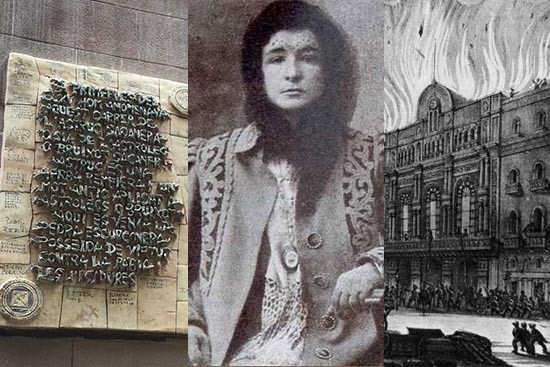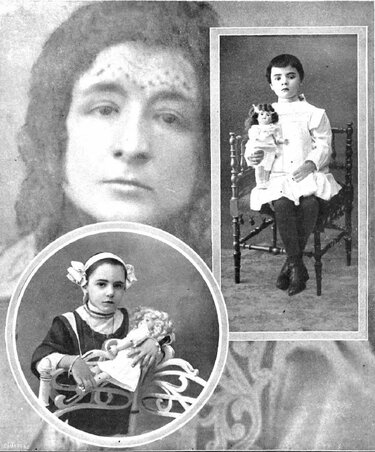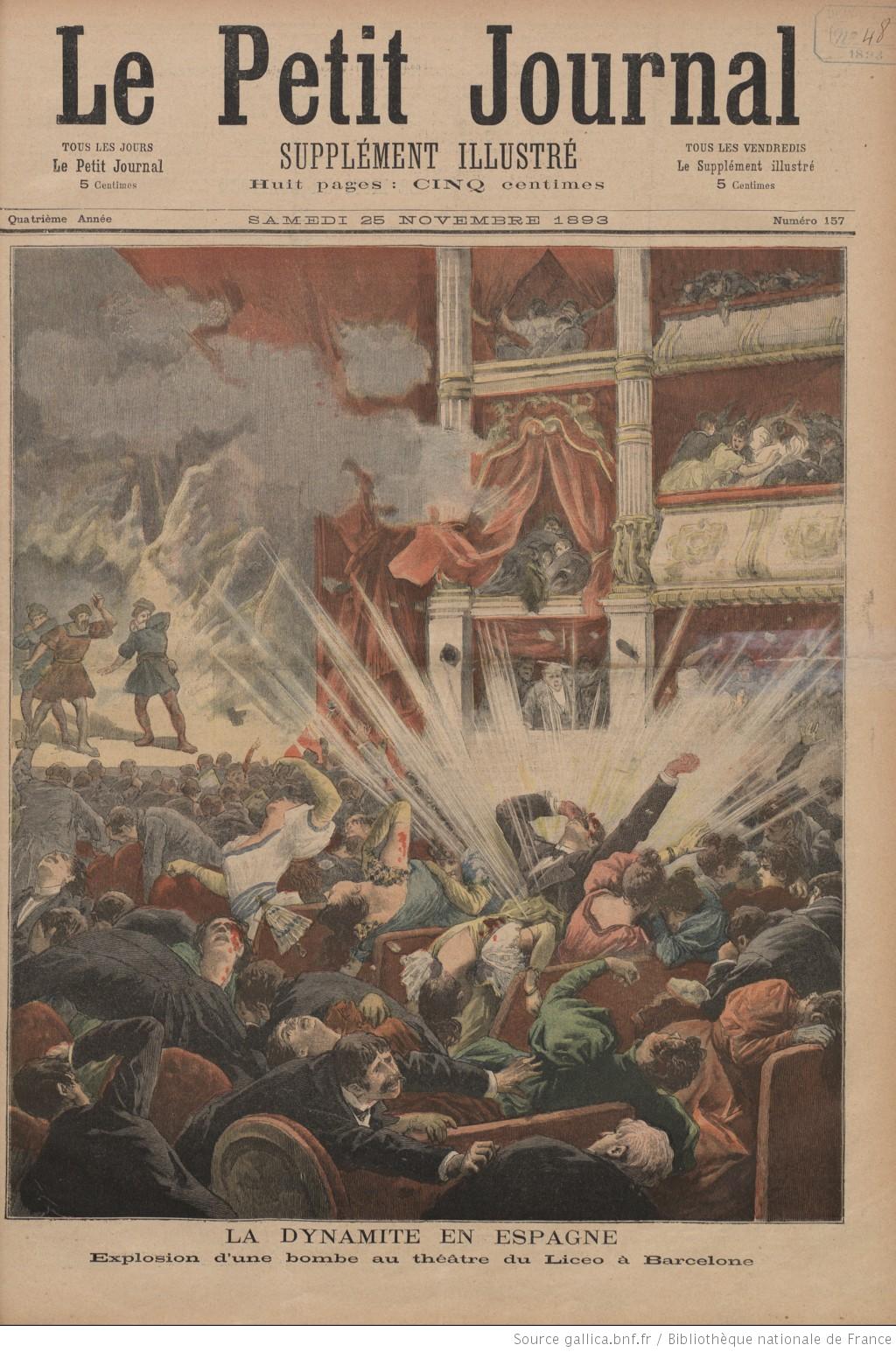Myths and urban legends from Barcelona’s old town
From the good wizard who healed ailments, the Vampire of Raval, and the curse put upon the Liceu opera house, the Catalan capital is replete with mystery

The history of Barcelona is filled with wonders as much from the world of art and architecture as from the world of the occult and mystique.
The city was first founded by the ancient Romans thousands of years ago, and boasts a beautiful old town with tight, narrow streets and compact neighbourhoods. The dark and gloomy apartments coupled with the close proximity to one another with which the city’s residents lived provided fertile conditions for stories to spread quickly by mouth.
However, the oral tradition allows not only for such tales to pass down generations but also for details to be blurred over time, for exaggerations to augment the reality, and for blanks to be creatively filled in. Sooner or later the stories can often take on new dimensions, and nobody can be sure where the truth ends and fiction begins,
On the one hand, some people enjoy the mythmaking, revelling in the aura of urban legends surrounding their home, but on the other hand, sometimes misconceptions about real lives can grow, possibly having damaging consequences.
The wizard who healed
Wandering around the Gothic neighbourhood, you could come across a plaque on Carrer d’Estruc adorned with what looks like occultist writing and designs, and a story told in ceramic letters in the middle. If that captures your imagination and you go looking for more clues on this street for something mystical, then you’ll begin to find them.
Carrer d’Estruc has “always been considered a magical street”, CultRuta tour guide María Jesús Navarro tells Catalan News.
The plaque tells the story of Astruc Sacanera, an old wizard who lived on this magical street in the 14th century whose mystic brews were capable of healing rabies and bites.
It’s believed he had knowledge of herbs and chemicals and used them to cure people’s ailments, but María Jesús Navarro tells us that ‘medicine’ and the ‘herbs world’ were related but separate fields back then.
“Medicine in the middle ages was mainly in the hands of doctors. And then there was the herbs world. Usually, it’s controlled by nuns in monasteries and monks. The people who sold these kinds of products were considered like alchemists, but I don’t think Astruc Sacanero was an alchemist, I think he was something else a little more esoteric,” Navarro explains.
It’s believed that he had the capacity of manipulating herbs and chemicals into a paste to apply to wounds that would heal rabies and bites.
Astruc Sacanera was evidently an important man in the Barcelona of his day, important enough to have this street named in his honour. His plaque was put up in more modern times, having grown from the story that has followed the magical street for hundreds of years.
It was a hypnotist, Ricard Bru, who designed it, who is given the title of “occultist master” on the piece. Why a hypnotist? “Because this street was always considered a magic street, so who else could have put it up?” María Jesús Navarro points out.
Beyond this, not a great deal of detail is known about the life, work or power of Astruc Sacanero, and his legacy is shrouded in mystery.
The Vampire of Raval
Another historical figure from the history of Barcelona whose legacy is shrouded in mystery is Enriqueta Martí, also known as ‘The Vampire of Raval’ or ‘The Vampire of Barcelona.’
Enriqueta Martí was a real human being, not a vampire, who lived in the early part of the 20th century. If you grew up in the Catalan capital at any time after this era, the chances are high that your parents warned you that if you didn’t eat your vegetables, clean your room, or help out around the house, then the Vampire of Raval would come and take you away.
But just who was this infamous character whose name was used to evoke such fear? “There is a lot said about the poor Enriqueta Martí,” Navarro tells us. “La Vampira de Raval was the typical monster you would use to scare the children to make them eat broccoli.”
Enriqueta Martí lived in the Raval neighbourhood of Barcelona, on the outskirts of the city at the time, and she lived between 1868-1913. Her story has passed into urban legend, with much of it proven true, but with nobody knowing to what extent.
María Jesús Navarro believes that Martí likely came from the countryside and was probably poor. “She probably couldn’t read, but she must have been a clever person, as she knew, like Astruc, about herbs and remedies.”
Raval was outside of the city walls at the time, and it’s where prostitution was commonplace and where workshops and industries “you don’t want next to your home” were located, such as candle makers, an activity more prone to causing fires that could destroy your house.
Additionally, Raval was also home to various monasteries and orphanages. During the day Enriqueta Martí would observe the children who were left on their own, making sure that they were indeed orphans without anybody claiming them.
Martí would then kidnap the orphans, “take them to the bourgeoisie in the Liceu opera house, and very prestigious customers would hire the sexual services of these children,” Navarro says.
One day, Enriqueta Martí made the mistake of kidnapping Teresita Guítart, a child with an aunty who launched a widespread campaign in the media and with police to find her again. The city was well aware of her disappearance, and when a neighbour spotted a sickly looking child through the window of Enriqueta Martí’s apartment, she called the police.
“The police came in and they discovered all these flasks full of substances that were organic, they could be blood, or kitten poops, they were organic, but they didn’t know what it was,” Navarro explains. Teresita Guítart was found in the property, along with another young girl named Angelita. “She was taken to prison, but nothing happened because the trial never arrived” as Martí passed away in 1913 before her testimony could be heard in court.

“But let’s think a little deeper,” Navarro invites. “Considering everyone was talking about Enriqueta, everyone was using her name to scare children, how come they didn’t investigate her a little bit longer?”
Enriqueta Martí’s customers were typically members of the elite, high society, the ruling class, very wealthy and very powerful people in early 20th century Barcelona.
“Who was paying for these children?” Navarro prompts. “The bourgeoisie, politicians maybe, important people.” When the police arrives at Martí’s house, she was very confident in allowing the officers to search her home and investigate. “She appeared to be sure because she felt protected by who knows who.”
Various other eerie and unexplained mysteries were attributed to ‘The Vampire of Raval’ without proper investigation taken by the authorities.
And so, her legend spread and grew. How much of a monster was Enriqueta Martí, and how much of a scapegoat did she serve as in order to protect the reputations of members of the elite and high society? More than 100 years later, we still can’t be sure.
The curse of Liceu
The Splendid Liceu opera house is one of the crown jewels of Catalan culture, a theatre and concert hall located on the famous La Rambla boulevard that has hosted some of the biggest names in music and opera over the last century and a half.
However, Liceu is also said to have a curse on it that sees the beautiful building routinely reduced to rubble.
The site the concert hall now stands on was formerly a Trinitarian convent, but when the religious order was expelled from the site they put a curse on it, considering such pagan activities unfit for such sacred land.
The theatre first burned down in 1861, a mere 14 years after it was inaugurated. It’s said that after this first fire, a piece of paper was found among the ruin and ashes with a written message on it reading - “I am an owl and I go alone, if you raise it again, I will burn it again.”
The theatre was then bombed in the middle of a show by anarchist Santiago Salvador during a time of great social unrest in 1893, who was retaliating against the execution of Paulí Pallàs. Two Orsini bombs were thrown from the balcony to the main stalls of the opera house, killing twenty people. The seats in which the killed were sitting would not be occupied during any performance for years to come.

The Liceu then went through a period of relative calm, standing tall for just over a century before its next fire. In 1994, when a spark lit up the stage curtain, ultimately burning the theatre to the ground.
The rebuilt Liceu was once more re-opened in 1999, with a performance of Puccini's Turandot and, at last check, it’s still currently standing.